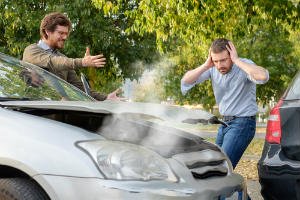
During a recent five-year stretch (2011-2015), an average of 1,953 people died and 10,673 people suffered serious injuries each year in car accidents on Canada’s roads, according to Transport Canada. These statistics underscore the importance of driving safely on the highways in British Columbia and everywhere else your travels take you. Here, we provide a few reminders about what safe travel on highways involves.
Eliminate Distractions
Driving while distracted is one of the most dangerous things that a motor vehicle operator can do, putting both themselves and others at a risk of collision. The Canadian Automobile Association (CAA) calls distracted driving a “national issue.” The CAA cites data from the Alberta Department of Transportation stating that distracted drivers are three times more likely to be involved in a crash than non-distracted drivers.
Texting while driving may be the most-discussed type of distracted driving. However, distracted driving may also include behaviors like grooming, changing the radio, interacting with children or pets, eating, drinking a beverage, reading a map or looking at a GPS while driving.
In order to get to your destination without putting your life and the lives of others in danger, you should simply focus on the road and eliminate any and all other distractions.
Keep Your Vehicle Maintained
In order to be a responsible driver on the highway, you need to maintain your vehicle and keep it in safe driving condition. If it is not, you increase your risk of being involved in an accident. To maintain your vehicle, you must:
- Change and top off all fluids.
- Check your tire pressure and tire tread on a regular basis and replace tires as needed.
- Make sure that your brakes, lights, windshield wipers and other parts work as they should.
Keep in mind: Something like a tire blowout could cause a very serious accident. Something as seemingly minor as burnt out headlight could reduce other drivers’ ability to see you and also increase the risk of a crash.
Pay Attention to Speed
If you travel at a high speed, you will greatly increase your risk of getting into an accident, according to the European Commission. Indeed, studies show that a change in speed of even one kilometer per hour (0.62 miles per hour) raises the risk of an accident by between two and four percent. The faster you travel, the less time you have to react, swerve or apply your brakes in order to avoid something such as another car or an animal in the road.
If you travel at a high speed, you also heighten the severity of a crash. A higher speed causes more force at the time of impact.
When you operate a motor vehicle, you should pay attention to your speed at all times and never travel faster than the speed limit. Also, you should always focus on road, weather and traffic conditions and adjust your speed accordingly.
Keep a Lookout for Motorcyclists, Bicyclists, and Pedestrians
Every year, on average, nearly 6,000 crashes occur in British Columbia involving motorcyclists, bicyclists or pedestrians, according to ICBC statistics. Unfortunately, too many motor vehicle drivers fail to share the road safely with those who get around on two wheels or two feet and cause these crashes.
You can reduce the risk of a crash with a cyclist or pedestrian by keeping a proper lookout, especially as you approach intersections, and by paying attention to situations where they have the right of way.
Activate Your Taillights
In Canada, daytime running lights are compulsory. However, because their headlights may always come on, many people forget that they must activate their taillights, too. Make sure to always turn on your lights and ensure that both your headlights and taillights are on when you hit the road. Doing so will help others to see you and, in particular, reduce your risk of getting into a rear-end accident.
Never Drive While Impaired
You put yourself and others in danger if you consume alcohol or use drugs (including some prescription medications) and then try to operate a motor vehicle. If you are impaired by alcohol or other substances, your reaction time slows down, and your chances of getting into an accident significantly increase. If you have used anything that could impair your ability to safely operate a motor vehicle, simply stay off of the road.
Know Your Route
If you drive in an unfamiliar place, you may get distracted by trying to find where you are going. For instance, you may look at a map or GPS device while trying to find an exit or turn and take your focus off the traffic around you.
If you must drive on an unfamiliar highway, ask a passenger in your car to navigate for you or get your GPS to speak to you so you do not have to keep looking down at a map.
Know How to Drive Safely Around Large Trucks
Large trucks play an essential role in the transportation of goods and products across British Columbia. However, when large trucks get involved in a crash, the damage can be catastrophic. For this reason, you should make sure to operate your vehicle safely when you drive around big rigs on the highway.
Large trucks need more room to make turns, and they require more time and distance to stop. Also, truck drivers cannot always see others on the road. As such, you should be sure to:
- Never pass a truck on the right-hand side. If you try to pass on the right, your vehicle could get squeezed between the large truck and the curb or a barrier.
- Always stay out of a truck driver’s blind spots, including directly in front of and to the rear of the truck.
- Avoid tailgating a large truck or being tailgated. If you follow too closely behind a large truck, this can put you at risk of an underride accident (in which your vehicle rides under the back of the truck) should the truck driver stop unexpectedly. Similarly, if a large truck tailgates you, simply try to safely change lanes and get out of the truck driver’s way.
- Contact our truck accident lawyer if you were involved in a truck collision in or around Vancouver.
Check Your Mirrors and Drive Defensively
Even if you operate your vehicle safely, you cannot control others on the road. For this reason, you should drive defensively. In other words, you should:
- Never expect another driver to know what you are going to do or expect that another driver will act in the same manner that you would.
- Understand the risks of driving in certain road conditions.
- Give plenty of room to other drivers.
- Move over if you are being tailgated or someone is driving aggressively around you.
- Never assume that you have the right of way and make sure that other drivers are aware of you before you proceed.
- Pay attention to your surroundings, double-check your mirrors and look over your shoulder before you change lanes – even if your blinker is on.
Another very important component of driving defensively is to make sure that you are prepared to react should another driver do something unsafe.
Contact Our Vancouver Highway Collision Injury Lawyers
Highway collisions are often the most serious types of accidents. These crashes typically occur at higher speeds than non-highway accidents. The injuries from a high-speed crash can be tragic, including traumatic brain injuries, spinal cord injuries, severe and permanent scarring and disfigurement.
If you are involved in a highway collision in British Columbia, our experienced highway accident lawyers will help you. When you call Klein Lawyers, we will provide you with the sound legal representation you need in order to navigate the ICBC claims process. Contact us today to learn more in a free consultation.










